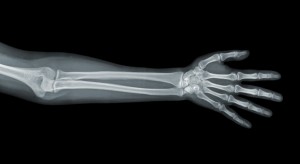Meta-analysis supports tea’s link to stronger bones

However, the data did not indicate that there was an association between tea consumption and a reduced risk of fracture.
“To our knowledge, this is the first meta-analysis to evaluate the association between tea consumption and risk of osteoporosis,” wrote scientists from the China Academy of Chinese Medical Sciences in Nutrition Research.
Tea benefits
The study adds to an ever-growing body of science supporting the potential benefits of green tea (Camellia sinensis) and its constituents, most notably EGCG (epigallocatechin gallate).
Green tea contains between 30% and 40% of water-extractable polyphenols, while black tea (green tea that has been oxidized by fermentation) contains between 3% and 10%. Oolong tea is semi-fermented tea and is somewhere between green and black tea. The four primary polyphenols found in fresh tealeaves are EGCG, epigallocatechin (EGC), epicatechin gallate (ECG), and epicatechin (EC).
Meta-analysis details
The Chinese scientists pooled data from 16 studies for their meta-analysis, four cross-sectional studies and three cohort studies were focused on tea consumption and BMD. These studies showed an increase in BMD with tea consumption.
The remaining nine studies investigated tea consumption and fracture, and found no associations. However, when two outlying studies were omitted from the analysis, a statistically significant 23% reduction in fracture risk was observed. (The two outliers were deemed to be high-heterogeneity studies).
Mechanism(s) of action
Commenting on the potential mechanism of action, the authors noted that several mechanisms have been hypothesized to explain the relationship between tea and healthy bones, including enhancing the generation and survival of osteoblasts (cells responsible for bone formation), inhibiting the growth and activity of osteoclasts (cells which break down bone, leading to resorption and weakening), improving the synthesis of bone collagen, and/or stimulating the differentiation of stem cell into osteoblasts.
“This updated meta-analysis demonstrates that tea consumption could increase BMD, but the association with osteoporotic fracture requires further investigation,” wrote the authors. “Together, the results highlight the need for future, high-quality–designed clinical trials on tea consumption and osteoporosis.”
Source: Nutrition Research
Volume 42, June 2017, Pages 1–10, doi: 10.1016/j.nutres.2017.02.010
“Tea consumption may decrease the risk of osteoporosis: an updated meta-analysis of observational studies”
Authors: M. Guo, H. Qu, L. Xu, D-z. Shi













